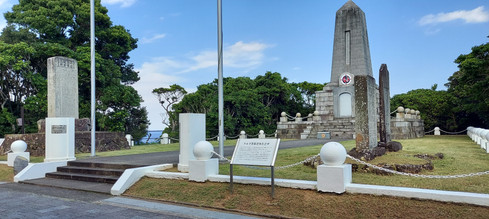Full circle two: My Journey to Kushimoto
- Mete@Commoncolors
- Jul 31, 2024
- 2 min read
In the days leading up to my naturalization, I traveled to Kushimoto in Wakayama Prefecture, a place with a significant but somber historical connection between Japan and Türkiye. This coastal town is known for the tragic sinking of the Ottoman frigate Ertugrul in 1890—a disaster that claimed the lives of over 500 sailors.
During my visit, I took time to see the monument and the museum dedicated to the Ertugrul. The museum recounts the events of that fateful night when the ship, after completing a diplomatic mission to Japan, was caught in a typhoon on its return voyage. As I read the list of those who lost their lives, I couldn't help but reflect on the gravity of the situation. I found myself wondering whether the disaster might have been avoided if the ship’s captain had taken the Japanese warnings about the approaching typhoon more seriously.
Kushimoto itself felt remote, far removed from the major cities of Japan and even further from Türkiye. This sense of distance underscored the improbability of the events that took place here, yet it also highlighted the significance of the connection formed in the aftermath of the tragedy. The villagers of Kushimoto, despite their own limited resources, rescued and cared for the survivors, eventually helping them return to Türkiye. This act of assistance marked the beginning of a relationship between the two countries, one that has evolved over time from an initial gesture of compassion.
The relationship between Japan and Türkiye has continued to deepen through acts of mutual aid. One significant example occurred during the Iran-Iraq War in 1985, when Turkish Airlines carried out a daring rescue mission, evacuating 215 Japanese nationals who were stranded in Tehran amidst the conflict. This operation is remembered as a significant humanitarian gesture that strengthened the bond between the two nations. Additionally, both countries have come to each other's aid during natural disasters. After devastating earthquakes in Türkiye, Japan provided emergency assistance, and in turn, Türkiye sent rescue teams to Japan following the Great East Japan Earthquake in 2011. These acts of support have reinforced the friendship that began over a century ago in Kushimoto.
The timing of my visit was also noteworthy. Two days after my visit to Kushimoto, I became a naturalized citizen of Japan. On my last day as a *gaijin*, or foreigner, I left Kushimoto with a heightened awareness of the historical ties that link Japan to other nations, and the ways in which these connections shape identities and relationships across borders.
In reflecting on my journey to Kushimoto, I see it as a second circle—a trip that, like my Shikoku pilgrimage, brought me to a deeper understanding of the cultural and historical currents that influence our lives. This experience added another layer to my sense of belonging as I transitioned from being an outsider to a citizen, with a greater appreciation for the shared histories that connect us all.










Comments